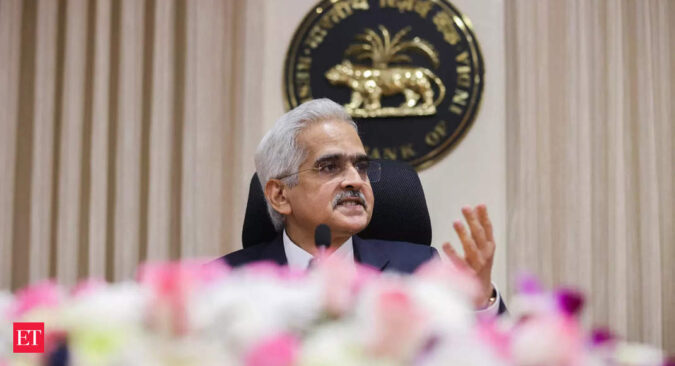The MPC surprised with its decision when most experts had expected a 25 basis points rate cut and softening of the stance to neutral. The MPC did retain the hard stance, it but did not hike the rate. Instead of a dovish hike, RBI Governor Shaktikanta Das chose a hawkish pause. Or, call it a dovish decision mounted on a hawkish stance.
In February, the MPC had issued a very hawkish guidance, and the voices of doves had gone unheard. External members Jayanth Varma and Ashima Goyal had voted against the decision to raise the key repo rate. Goyal had warned against overtightening that could hit demand badly once the series of rate hikes fully passed through.
Varma pointed out that in the second half of 2021-22, monetary policy was complacent about inflation, and we are paying the price for that in terms of unacceptably high inflation in 2022-23. In the second half of 2022-23, he said, monetary policy has become complacent about growth. “I fervently hope that we do not pay the price for this in terms of unacceptably low growth in 2023-24,” he added.
It seems the MPC have now heard the doves. But Shaktikanta Das, the RBI Governor, emphasised today that the decision to pause was for the April meeting only. What he meant was that the doves might be cooing but the hawks haven’t gone away — they will keep circling above, ready to swoop down.
Where is Arjuna looking?
The RBI’s message could be lost to many in the cacophony of screeching hawks and cooing doves, but it dawns bright and clear when seen through another analogy. Das had compared the central bank to the Mahabharata’s skillful and unwavering archer Arjuna who had pierced the eye of a wooden fish rotating overhead while looking at its reflection in the water below. Das had said in November last year that the eye of the fish for the RBI was inflation, which was the primary target for the RBI. In December, Das got back to the Arjuna analogy, saying that “…the Arjuna only looks at inflation and growth.”
Today, it seems the RBI’s Arjuna has got distracted, looking not only at the eye of the fish that is inflation but also another factor, financial stability. He is not the unwavering, single-focused archer but a tactician who can look at things from the corner of his eye. That’s why today Das invoked a different civilisational hero, Kautilya, who seems to be a better fit for the RBI today than Arjuna from five months back. Considering the banking turmoil in the US partly triggered by high interest rates, the RBI now looks up to Kautilya who can factor in this new element besides its usual inflation-growth paradigm.
From Arjuna to Kautilya
This is how Das invoked Kautilya today in his speech: “…we are keeping a close watch on the banking sector turmoil in some developed countries. In this context, let me once again recall Kautilya’s wisdom, which remains relevant even for today’s world: “In the interests of the prosperity of the country, …..[we] should be diligent in foreseeing the possibility of calamities, try to avert them before they arise, overcome those which happen, remove all obstructions to economic activity …..”. But he also quoted Kautilya to justify sticking to the withdrawal of accommodation: “I recall the wise counsel of Kautilya more than two thousand years ago: “Be not slack before the whole job is finished”.” He reminded that the RBI’s war against inflation was not over yet.
B Prasanna, ICICI Bank’s Global Head of Markets, one of the few experts who had correctly predicted what the RBI would do in its Thursday meeting, had told ET that in addition to the pursuit of price stability, the RBI has now got another variable to consider — the financial stability, after the banking crisis in the West which has roiled the financial markets.
“They have two choices — do a dovish hike which basically means they bring it to 6.75% and then change the withdrawal of accommodation stance. Or do a hawkish pause which is to say that I won’t change the rate but I’ll keep the withdrawal of accommodation so that they can use that later on to hike in June. Between the two alternatives where the error can be minimum is `wait and watch’ which is a conservative strategy. Nobody can say you did not do much when inflation was going up. So they can afford to pause in April. In any case, liquidity is tightening. So they have enough reasons to say that I’ve done enough. I want to see the leads and lag effect. But I would place the odds at 50-50,” Prasanna had told ET.
The RBI’s decision to pause in April while keeping the hawkish stance is the Kautilya-like clever tactic which serves it well. “Should the developments in the US worsen simultaneously with a rate hike by the MPC then the RBI and MPC will not be able to reverse course quickly and financial conditions could tighten far more than intended,” Prasanna had said. The RBI would always have the option of raising rates in its June policy should the banking turmoil in the US prove short-lived and domestic inflation continues to rise, Prasanna added.
From an Arjuna-like hard-focused pursuit of price stability, the RBI now seems to have adopted a Kautilya-like wait-and-watch policy, which affords the RBI the safety of a pause as well as the scope of a rate hike in future.
